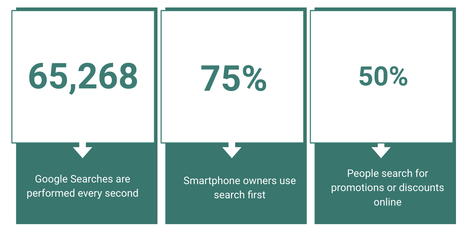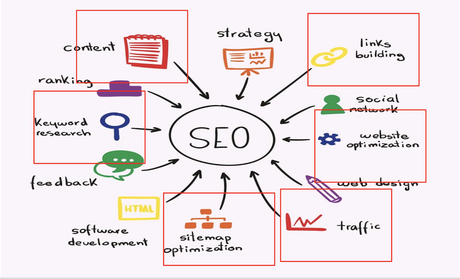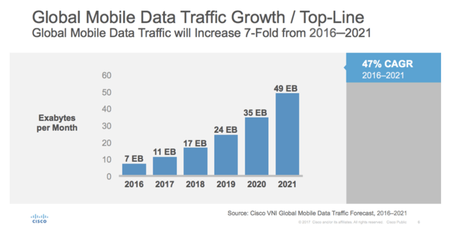It is my observation that most small businesses in Pakistan are bootstrapping and prefer to do their marketing specifically Digital Marketing themselves. This is, of course, understandable and commendable – but most fail to comprehend that Digital Marketing is not merely Social Media Marketing (SMM) but constitutes a variety of activities all geared towards attracting a potential customer, engaging him and finally converting him. Search Engine Optimisation (SEO) is a part of Digital Marketing and helps in attracting leads by drawing them towards your website, hence it is and should be an essential part of your Digital Marketing Strategy.
SEO, in layman’s terminology, are all activities that you undertake to increase the quantity and quality of your website traffic.
Why SEO?
Before we delve into the basics of SEO, businesses first need to understand WHY it is important. Say you have this super awesome website, that you created yourself, if you have basic WordPress skills or paid a developer to create it for you. It looks great but UNLESS it is drawing traffic – it is a wasted resource when it could be your topmost source of conversions! The stats below are just an indicator of how people are increasingly depending on the search engines before making any consumption choices.

What do you mean by website traffic?
Before you understand SEO, you however need to understand what exactly do we mean by the term, website traffic. Website traffic, generally constitutes the following:

For basic SEO purposes we will be concentrating on organic traffic and referral traffic for now.
What is SEO?
SEO consists of a variety of activities, which when combined together, can help boost your Search Engine Results Pages (SERP). SEO, once done right, ensures that your website shows up on the first page (ideally at the top) when the user searches for a term that is related to your business. Say if you are selling coffee, when someone searches for best place for coffee in xyz place, you would want your website to show up top. This is, however, easier said than done. Here is an overview of a few of the activities that comprise SEO and are pertinent from an Ecommerce point of view. To keep it at a basic level, we will be touching upon those highlighted in red only, for the purposes of this article.
 Image Credits: https://www.redlineminds.com/search-engine-optimizaton/what-is-seo-how-to-do-seo-for-ecommerce/
Image Credits: https://www.redlineminds.com/search-engine-optimizaton/what-is-seo-how-to-do-seo-for-ecommerce/
Here are a few basic SEO activities which businesses can attempt themselves, if they have some technical know-how:
- Keyword -driven content
- Link building
- On-page optimization
- Website speed and Mobile optimization
- Sitemaps
1. Keyword-driven content
Whenever you add something to your website, be it text, images, content – you are adding a source that can attract people towards your website. Now your content might be very engaging, extremely informative or breathtakingly poignant – none of that matters if nobody finds it. How can you tell people who you are and what you are selling? Well you need to tell your search engine first. The search engine can determine what you are all about by reading your text, analysing it and forming conclusions about your business. Gone are the days when you could dupe the search engines by stuffing the same keyword in your content over and over again.
Search engines have higher standards now – they not only judge your content for readability but also relevance and that is where the role of keyword research comes in.
Your keyword research process should always start with a thorough understanding of who your target audience is. Once you are done with defining your target audience, you need to look for the right keywords, evaluate them and then start incorporating them into your content.

2. Link Building
Link Building essentially means that the link for your website is present on other websites. This helps you in the following ways:
- Builds credibility
- Earns you referral traffic
- Helps increase ranking
When your website is mentioned on another good quality website, it develops a good image of your business and earns you traffic through that link. Also, as a result of these high-quality link your SERP (Search Engine Results Page) ranking also goes up.
3. On-page optimization
Every page on your website needs to be optimized so that it ranks well on search engines. The keywords that you researched and then evaluated and incorporated into your content should be a part of your title tag, headers and body, URL, Meta Description. Other than that, you need to optimize your image’s alt text, avoid duplicate content and tags, use helpful URL structures and link internally to previous content so that the search engine can determine the structure of your website.
4. Website Speed and Mobile Optimization:
Google rolls out new algorithms very frequently. Websites which have good loading speed and are mobile friendly are ranked higher on SERP. The below graph depicting the increase in mobile data traffic usage is a good indicator of why Google is concentrating on mobile optimization:
 Image Credits: https://www.zdnet.com/article/mobile-data-traffic-will-increase-7-fold-from-2016-to-2021-cisco-says/
Image Credits: https://www.zdnet.com/article/mobile-data-traffic-will-increase-7-fold-from-2016-to-2021-cisco-says/
5. Sitemaps:
Just as you use normal maps to decide where to go, search engines use sitemaps to determine the layout of your website. There are two types of sitemaps – XML and HTML. XML is generally for the search engine’s usage whereas HTML is more user facing – telling the user where to go or how to navigate through a website. It is a good practice to have both sitemaps on your website.
These are by no means an exhaustive list but includes some activities that businesses can undertake on their own in order to improve their SERP rankings and consequently draw more website traffic and eventual customers.
About Author
 Zunaira Omar is a Digital Marketing Strategist | Inbound Marketer | Speaker with 5+ years of experience in an international firm. She is skilled at crafting B2C inbound marketing strategies, lead generation and lead nurturing. She also has command over a variety of digital marketing skills such as SEO, Social Media Marketing, Content Management, Remarketing and Email marketing.
Zunaira Omar is a Digital Marketing Strategist | Inbound Marketer | Speaker with 5+ years of experience in an international firm. She is skilled at crafting B2C inbound marketing strategies, lead generation and lead nurturing. She also has command over a variety of digital marketing skills such as SEO, Social Media Marketing, Content Management, Remarketing and Email marketing.

